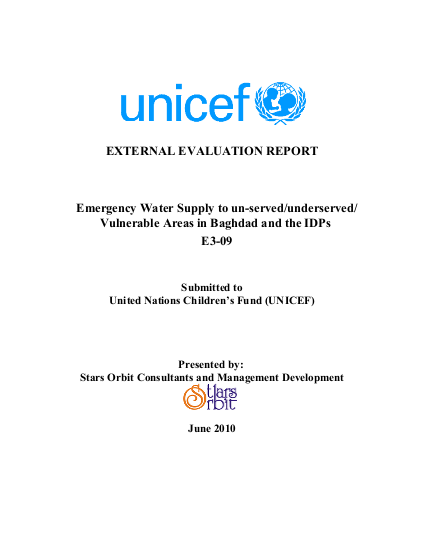
According to the National Development Strategy for Iraq, 2005-2007; up to 1991 water and sanitation systems in Iraq were operating efficiently. Safe potable water was accessible to 95% of urban and 75% of rural inhabitants. 218 conventional water treatment plants were operating in the country and 1,191 compact water treatment plants were also in operation. Sanitation services covered 75% of urban communities and 50% of rural ones.
Recent studies show that many water and sewage treatment plants were provided at an “acceptable” level. Of the 177 water treatment plants only 34 were classified as “good.” Sewage collection and treatment service in Baghdad is provided to only 80% of the population and only 9% of urban populations outside of Baghdad, while rural areas in the north of Iraq do not have piped sewage systems.
Sanitation is thus becoming a serious environmental and health problem. Deteriorating sewer pipes are contaminating the potable water network and underground water, further adding to the health and environmental problems. It is estimated that 50% of wastewater generated in Iraq is being discharged into the rivers and waterways. Baghdad contributes as much as 75% of that discharge.
The developmental goal of the project was to strengthen the government’s capacity to protect public health by averting water borne disease outbreaks during critical water shortages and emergencies by enhancing access to safe water to the affected population during critical shortages and emergencies in Baghdad.
Resource collections
- Evaluating humanitarian action
- Monitoring of humanitarian action
- Topics
- UN Habitat - Urban Response Collection
- Urban Response - Urban Crisis Preparedness and Risk Reduction
- Urban Response Collection - Community Engagement and Social Cohesion
- Urban Response Collection - Economic Recovery
- Urban Response Collection - Environment and Climate Change
- Urban Response Collection - Housing, Land and Property
- Urban Response Collection - Urban Crisis Response, Recovery and Reconstruction
- Urban Response Collection - Urban Resilience
